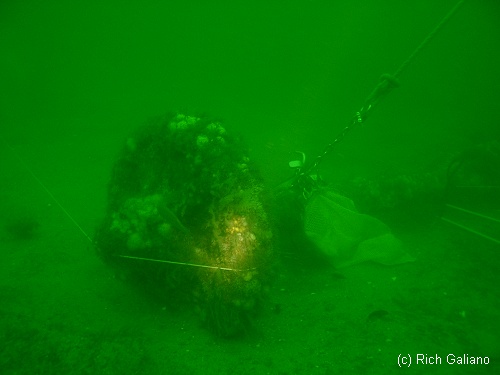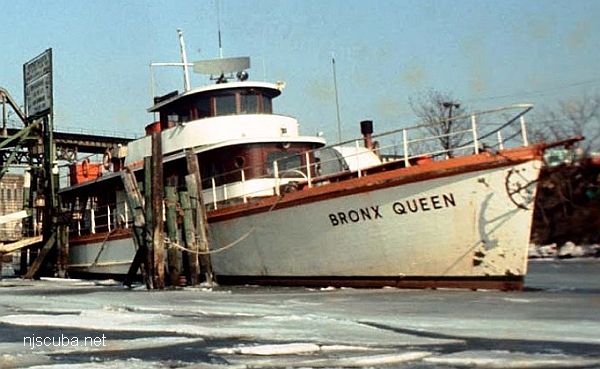Northeast Sailor

- Type:
- shipwreck, sailing ship
- Depth:
- 75 ft
The "Northeast Sailor" is the remains of a large sailing ship. The absence of towing bits is an indicator that this was probably not a schooner barge, while the presence of a boiler and steam machinery place the vessel in the mid to late nineteenth century.

The lay of the wreck is typical. The Bow faces east, probably into the storm that sank her. Low wooden remains lie in lines emanating from a sizable chain-pile and anchor. Some machinery can also be found, including the aforementioned boiler and steam winches. Although the wreckage is scattered, navigation is not difficult. The bottom is clean coarse sand, and there are lobster holes dug beneath the wooden ribs. Many of these are very deep, and even a long stick will not reach the bottom, so lobstering on this wreck is a challenge, but doable. The last time I was there, I grabbed half a dozen nice-sized lobsters, and not one keeper in the lot! All females.





Drawing courtesy of Aaron Hirsh


Questions or Inquiries?
Just want to say Hello? Sign the .